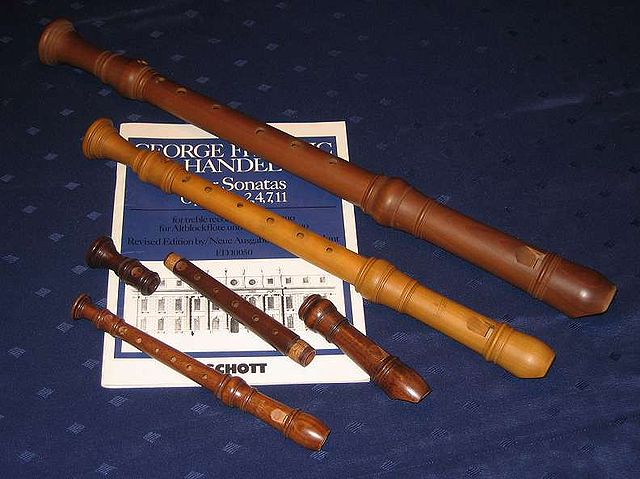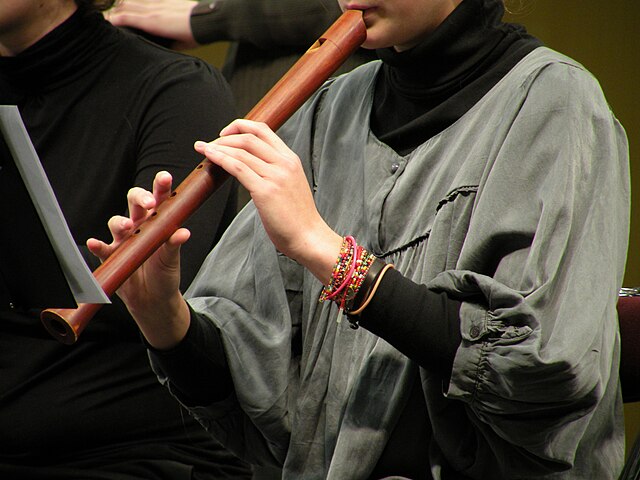A flue pipe is an organ pipe that produces sound through the vibration of air molecules, in the same manner as a recorder or a whistle, in a pipe organ. Air under pressure is driven through a flue and against a sharp lip called a labium, causing the column of air in the pipe to resonate at a frequency determined by the pipe length. Thus, there are no moving parts in a flue pipe. This is in contrast to reed pipes, whose sound is driven by beating reeds, as in a clarinet.
Four flue pipes of a diapason rank.
Wooden flue pipes
Recorder (musical instrument)
The recorder is a family of woodwind musical instruments in the group known as internal duct flutes: flutes with a whistle mouthpiece, also known as fipple flutes. A recorder can be distinguished from other duct flutes by the presence of a thumb-hole for the upper hand and seven finger-holes: three for the upper hand and four for the lower. It is the most prominent duct flute in the western classical tradition.
Various recorders (second from the bottom disassembled into its three parts)
Recorder with German fingering. Note that the 4th finger-hole is larger than the 5th.
A musician playing a recorder
Illustration of a man playing a recorder, from Jacques Hotteterre, Principes de la Flute Traversiere, de la Flute a Bec, et du Haut-bois, 1707






